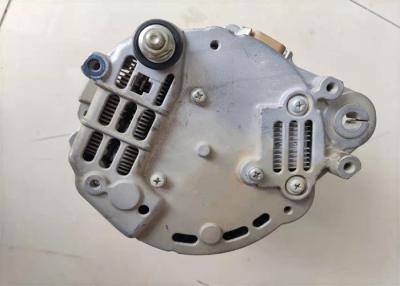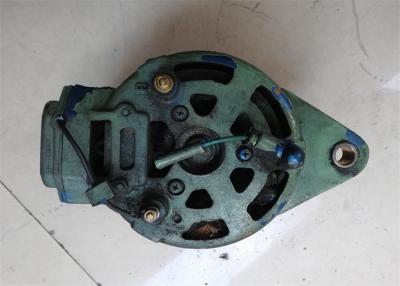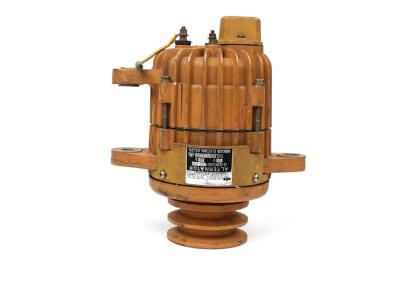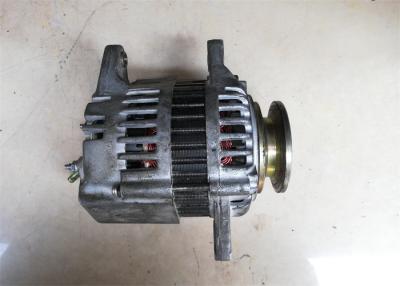




| Price | Negotiable |
| MOQ | Negotiable |
| Delivery Time | 5 - 8 work days |
| Brand | Komatsu |
| Place of Origin | Japan |
| Model Number | 6D125 |
| Packaging Details | Neutral Package or Fumigation Free |
| Payment Terms | D/P, T/T |
| Supply Ability | 50 pieces |
| Condition | Original | Place of Origin | Japan |
| Engine code | 6D125 | Machine model | PC400 / D6 - 11 |
| Size | Standard | Packaging Details | Neutral Package or Fumigation Free |
| Color | Picture | Material | Metal |
| Model Number | 6D125 | Supply Ability | 50 pieces |
| Brand Name | Komatsu | Payment Terms | D/P, T/T |
| Price | Negotiable | Delivery Time | 5 - 8 work days |
| Product name | Engine Alternator | Part number | 600 - 821 - 3571 |
6D125 Excavator Diesel Engine Alternator 600 - 821 - 3571 For Excavator PC400 - 5
Specification
| Moderl number: 600 - 821 - 3571 | Voltage: 24V | |
| Alternator: 24V 13A | Application: Construction Machinery | |
| Engine number: 6D125 | Type: Direct Injection | |
| Type: Alternator Assembly, new | Engine type: Diesel | |
Description
What is the alternator?
The alternator works by turning mechanical energy into electrical energy. When your engine is on, it powers a drive belt that rests on a pulley attached to the alternator. The pulley turns the alternator's rotor shaft, which spins a set of magnets around a coil.
What are the components of the alternator?
An alternator is consists of four parts, but these are the main components and their functions:
1.
Rotor
and
stator
The
rotor
and
stator
are
the
electricity-producing
components
of
an
alternator.[3][4][5]
The
rotor,
a
cylindrical
piece
surrounded
in
magnets,
spins
inside
of
the
stator,
which
holds
a
fixed
set
of
conductive
copper
wiring.
The
movement
of
the
magnets
over
the
wiring
is
what
ultimately
creates
electricity.
2.
Voltage
regulator
The
voltage
regulator
oversees
the
power
the
alternator
makes.[2]
It
monitors
the
level
of
voltage
that
is
output
to
the
battery
and
delivers
power
to
the
rest
of
the
vehicle.
3.
Diode
rectifier
The
diode
rectifier
converts
the
voltage
from
the
alternator
into
a
form
that
can
be
used
by
the
battery
to
recharge.[2][4]
4.
Cooling
fan
Alternators
give
off
a
lot
of
heat
and
need
to
be
cooled
to
operate
efficiently.
While
they’re
built
with
vents
and
aluminum
casing
to
better
release
heat,
they’re
also
equipped
with
rotating
fans
for
added
cooling.[2][4]
New
alternator
models
have
internal
cooling
fans,
whereas
older
versions
tend
to
have
external
fan
blades.
7 Signs of a Failing Alternator:
1.
Dim
or
Overly
Bright
Lights.
2.
Dead
Battery.
3.
Slow
or
Malfunctioning
Accessories.
4.
Trouble
Starting
or
Frequent
Stalling.
5.
Growling
or
Whining
Noises.
...
6.
Smell
of
Burning
Rubber
or
Wires.
7.
Battery
Warning
Light
on
Dash.
What happens when alternator goes out?
A bad alternator will result in a discharged (dead) battery and cause a vehicle to not start or run, Alternators are designed to maintain a battery's charge, not to recharge a dead battery. Your alternator's job is to maintain a consistent charge on your battery. Draining your car's battery is not advised.
Your alternator is arguably one of the most important parts of your engine.Without it, your battery would quickly run out of juice, leaving you stranded.





